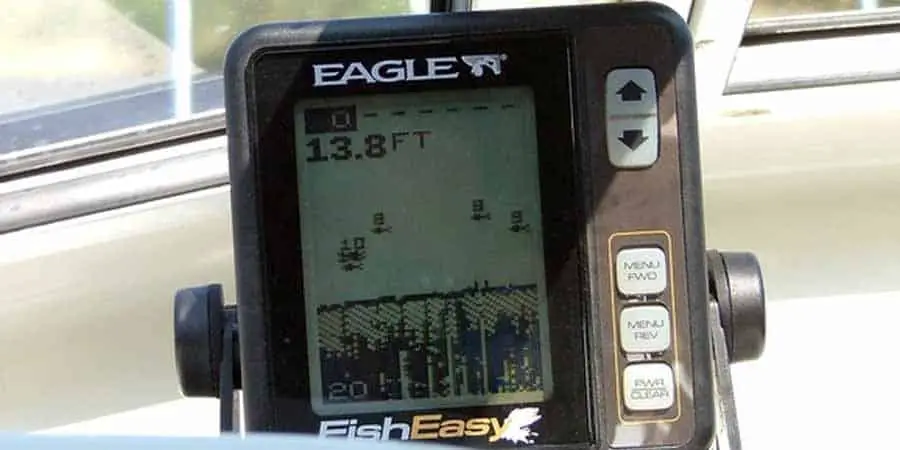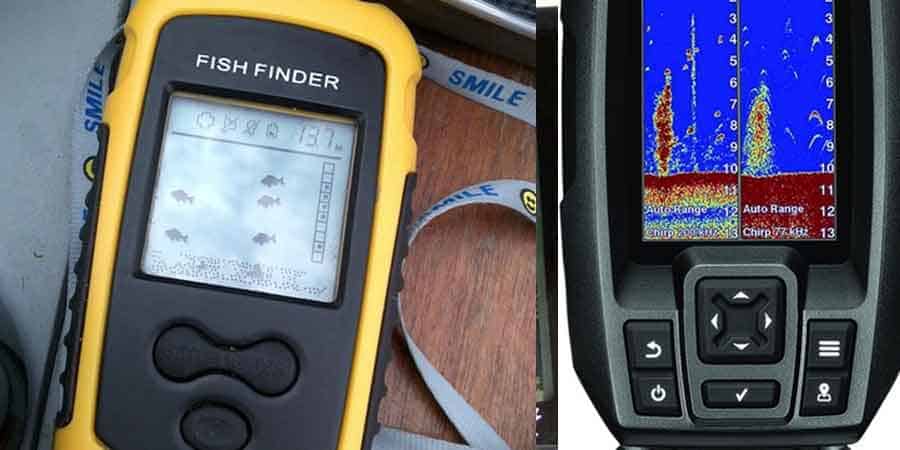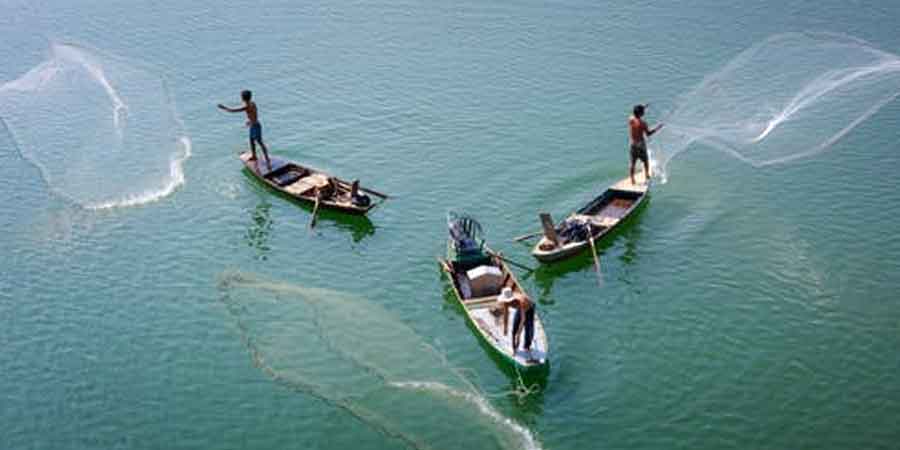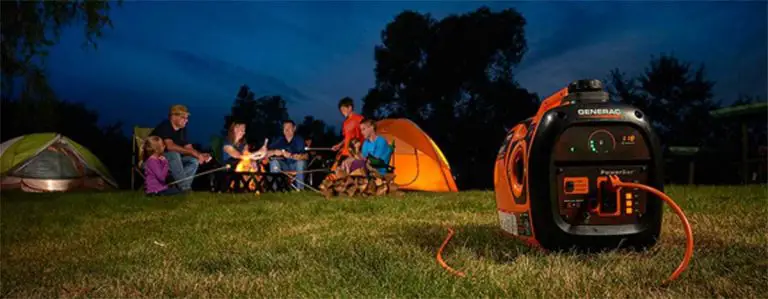What should I look for when buying a fish finder?

Share this article:
TopNotch Outdoor is independent – we research, test, and rate the top products to help you make the right buying choice. We sometimes use affiliate links and may receive a small commission on your purchase. Learn more…
There’s a lot to consider when buying a fish finder. But the first thing we look for is a big display screen to see all the information we need as clear as day.
But, of course…
That’s not the only thing you’d want from your fish finder. And we’re here to give you all the nitty-gritty about what to look for! You must know What should I look for when buying a fish finder
But before that, what exactly is a fish finder? In this BoatPriority.com article, we’ll answer that question, and also:
Have you ever heard of SONAR waves? Well, now you have. And you’ll hear more as you read along!
Are your nets ready?
And… into the deep!
What Exactly is a Fish Finder?

Also called a sounder, a fish finder is just as its name suggests. It’s an instrument for locating fish underwater. Although, sometimes it’s also able to find debris, obstacles, and the bottom of the water as well as schools of fish.
A fish finder set has a transducer attached to the boat’s hull and the main unit where the display screen is.
Later, we’ll explain further how it works.
These days…
The device is used by fishermen and fishing enthusiasts alike. After all, its benefits exceed locating fish for the guys on the boat.
For anglers, the device saves them time, fuel, and other resources used in catching fish. But fish finders also help keep you safe on your boat by reducing the chances of hitting big rocks, coral reefs, and other dangerous objects underwater.
Plus, it’s a really cool device to work with!
How does a Fish Finder Work?
You’ve probably already heard of SONAR technology. If not…
Let us explain.
The Sound Navigation and Ranging (SONAR) system makes use of sound waves. Just like echolocation.
The transducer transmits signals underwater then records the echoes that bounce back. The reflected sound waves differ depending on the nature and distance of the object that it bounced back from.
The information is then displayed on the screen for you to interpret.
Don’t worry…
It’s not rocket science!
Fish finders display info so that they’re easy to read. You’ll find where the sound waves were reflected from, how far they could be, and what had caused the bounce. Different objects have different symbols.
But the most important one is the fish symbol. Once you see that on-screen, you’ll know where to go next to meet your catch!
What are some features to look for in a fish finder?
Naturally, you’d want sounders with all the accessories. But chances are, that’s not going to be the case with your new fish finder – especially if you’re in budget constraints. But even more important than that is your fishing level and personal preference.
Non-professional anglers opt for more automatic features because – let’s face it – we’re not all that into technology.
So keep scrolling…
… and find more detail about what to consider when on the hunt for the best fish finders.
Depth
The depth of a fish finder is the measure of the deepest it can go without reducing the precision of its ability to locate the catch. It’s probably the most important feature to look for in a fish finder.
It’s the limiting factor to your fishing adventures.
Our recommendation…
… is that you get a fish finder of great water depths. In which case, whether you’re going deep sea fishing or not, you’ll be fine!
Display screen
Like we said…
Big screen size has a lot of advantages. But that’s an inadequate feature. No matter how large it is, it’s no use if the images you see are unclear.
The important thing is that you’re satisfied with the display.
They don’t have to look like the theaters. But most fish finders have overcrowded display screens that it would be hard for you to make sense of what you see. A big screen helps with that.
Plus…
Fish finders used to have black and white screens. But times have changed… Now there’s this technology called color screen with better screen resolution and more accurate scale.
GPS
GPS is not a necessary feature. But if you can have one, why not?
Of course, you can bring it separately or open an app on your phone. But there are fish finders with GPS capabilities. They can detect fish, navigate through open waters, plot hot spots, etc. Sure, they cost more, but the benefits are worth it.
Plus…
With the added feature, you can make pre-made maps to bring with you on your next expedition.
Installation
What’s the use of a good fish finder if you can’t mount it on your boat, right?
So…
We suggest that you look for finders that are easy to install. Especially if you consider yourself a novice angler, you might not install it properly, and the transducer falls off. Either that, or you can’t install it at all.
But just to be safe… In terms of installation, it doesn’t get easier than portable fish finders.
Manufacturer
With our clothes and phones, we have that favorite brand. The same goes with a fish finder. The manufacturer is important.
Actually…
It’s not really a feature. But you’ll have to look out for it just as well. If you have the money, you can explore different brands of sounders. You can’t be a hundred percent sure anyway if not by trial and error.
But that’s what reviews are for! If you check this boatpriority.com buyer’s guide RIGHT HERE, you’ll find brands that are already known in the fishing industry.

Portability
You’d also want to decide between a fixed fish finder or a portable fish finder.
Again…
The portable type is a lot easier to install than the fixed type. And it’s significantly cheaper. It varies in size, shape, and design. Some of them, you can even fit inside your pocket.
For beginners or those who do fishing for fun, this is the better choice.
On the other hand…
The fixed type needs professional or at least learned installation. They’re a lot more expensive, but also more durable. They may even last you years.
Serious bluewater anglers choose the fixed type over a portable.
Price
Don’t be fooled!
Just because something’s expensive doesn’t mean it’s always the best. In fact, some of the best devices are actually priced low.
Therefore…
You need to inspect a product first before buying it. Read about it. Ask around. Consider the specs and see how it compares to other brands. But don’t be afraid to try stuff out if you have the money.
Transducer (Cone Angle)
Finders send and receive SONAR waves through the transducer. It’s the part that locates the fish from under the deep water. So you better be particular about the transducer.
Here are some tips:
Look for transducers that have either dual beam or a wide cone angle emission – or both!
Professionals choose multiple beams because they emit frequencies in different directions. Dual-frequency transducers have a more accurate reading of what’s awaiting you under shallow water and even deeper water.
Now…
Cone angles are related to the area that the beam can cover. Wider cone angles cover wider areas.
As you lower the beam, the cone angle expands. That would mean that it can emit frequencies to a wider area. But the transducer then loses its sensitivity to the SONAR waves. This causes a dilemma.
So, if you have a few extra dollars, you can use a transducer that can emit more than one cone from one starting point.
Another thing…
Consider the transducer material. The range of options is pretty wide. So when choosing, you need to keep in mind your boat type and your purpose for fishing.
Boats with steel or aluminum hulls – or any kind of metal hulls – require stainless steel housings. Fiberglass and wood hulls are best with bronze housings. And plastic housings are for smaller boats or kayaks.
In other words…
If you fish for fun, trolling motor transducers or those of plastic transom mount is good enough.
What are the Types of Fish Finders?
You can classify finder types based on different categories. There are castable fish finders as opposed to in-hull ones. There are those used more often in inland lakes or shallow water because they require less power.
Really…
We can be here all day talking about this. So let’s just tear apart the most common classification basis – technology.
2D Fish Finders
This is sort of the first fish finder model. It uses traditional SONAR systems and has black and white displays. The signs are harder to read, but with a little practice, it’s still helpful.
Down Scan Fish Finders
This type is good enough as the main fish finder. It’s the most popular because it’s relatively cheap but performs well. The display is vivid, but its range is narrow, and fast-moving objects are harder to detect.
Side Scan Fish Finders
It’s the best type compared to the other two. The display’s crisp and realistic, the area it can cover is wide, and even that’s adjustable. But of course, it’s often more expensive.
Unlike other types, it will give you more detail. It can differentiate a large fish from a small fish, measure the hardness of the underwater floor.
But there’s more…
Fish finder types are also differentiated by their compatibility with your boat size.
Small boats are best paired with standalone sounders. It’s the go-to choice for a lot of inland lake fishers. But if you’re a professional with a larger boat, a network fish finder should be your choice. They’re designed to gather data from bigger areas.
Another type is the combination. It’s like when the standalone and network met halfway. And it’s the best fish finder for a medium-sized boat.
There’s a lot to choose from on the market. If you’re looking for the right fish finder for your fishing style, why not check out this top fish finders buyer’s guide RIGHT HERE?
How to Read a Fishfinder?
It may look a little complicated, but only a few things matters.
First…
… are the icons. For sure, you’d be more excited about the fish icons, but you’ll also find plants, rocks, and other obstacles. Modern sounders have different symbols for each.
Some devices, though, display fish arches instead. Bigger ones mean bigger fish, and smaller ones mean small fish.
But that’s not the only case.
Some arches are of the same length but different widths. Notice that width and go for the widest one. It’s the biggest fish to fry!
In some cases also…
… There are half-arches and full ones. Halves usually mean that the fish is a bit further from the range of the cone.
Suppose you don’t get it right the first time – no problem! You’ll soon get the hang of it as you keep on fishing and practicing with your sounder.
Conclusion: What should I look for when buying a fish finder

When it comes to this device, you’ll often hear about the Humminbird fish finders. They’re pretty good. But as you might’ve guessed by now, it still depends on what you need.
Whether it’s the best GPS tech that you’re looking for or devices with as much power as you need…
… the features mentioned above will help you catch your very own fish finder.
I guess we’ll see you in the deep!

![8 Most Comfortable Ways To Sleep In A Tent<br> [New Research] 8 Most Comfortable Ways To Sleep In A Tent [New Research]](https://topnotchoutdoor.com/wp-content/uploads/2020/06/How-to-sleep-FI-768x480.jpg)

![Motorhome Gas Mileage [Definitive Guide] [currentyear] <br>[NEW RESEARCH] Motorhome Gas Mileage [Definitive Guide] 2024 [NEW RESEARCH]](https://topnotchoutdoor.com/wp-content/uploads/2020/11/Motorhome-Gas-Mileage-FI-768x480.jpg)
![10 Best Ice Fishing Gloves ([currentyear])<br>Definitive Guide [New Research] 10 Best Ice Fishing Gloves (2024)Definitive Guide [New Research]](https://topnotchoutdoor.com/wp-content/uploads/2021/03/The-Best-Ice-Fishing-Gloves-FI-768x480.jpg)
![Truck Campers [Updated] Truck Campers [Updated]](https://topnotchoutdoor.com/wp-content/uploads/2022/07/Truck-768x461.webp)

